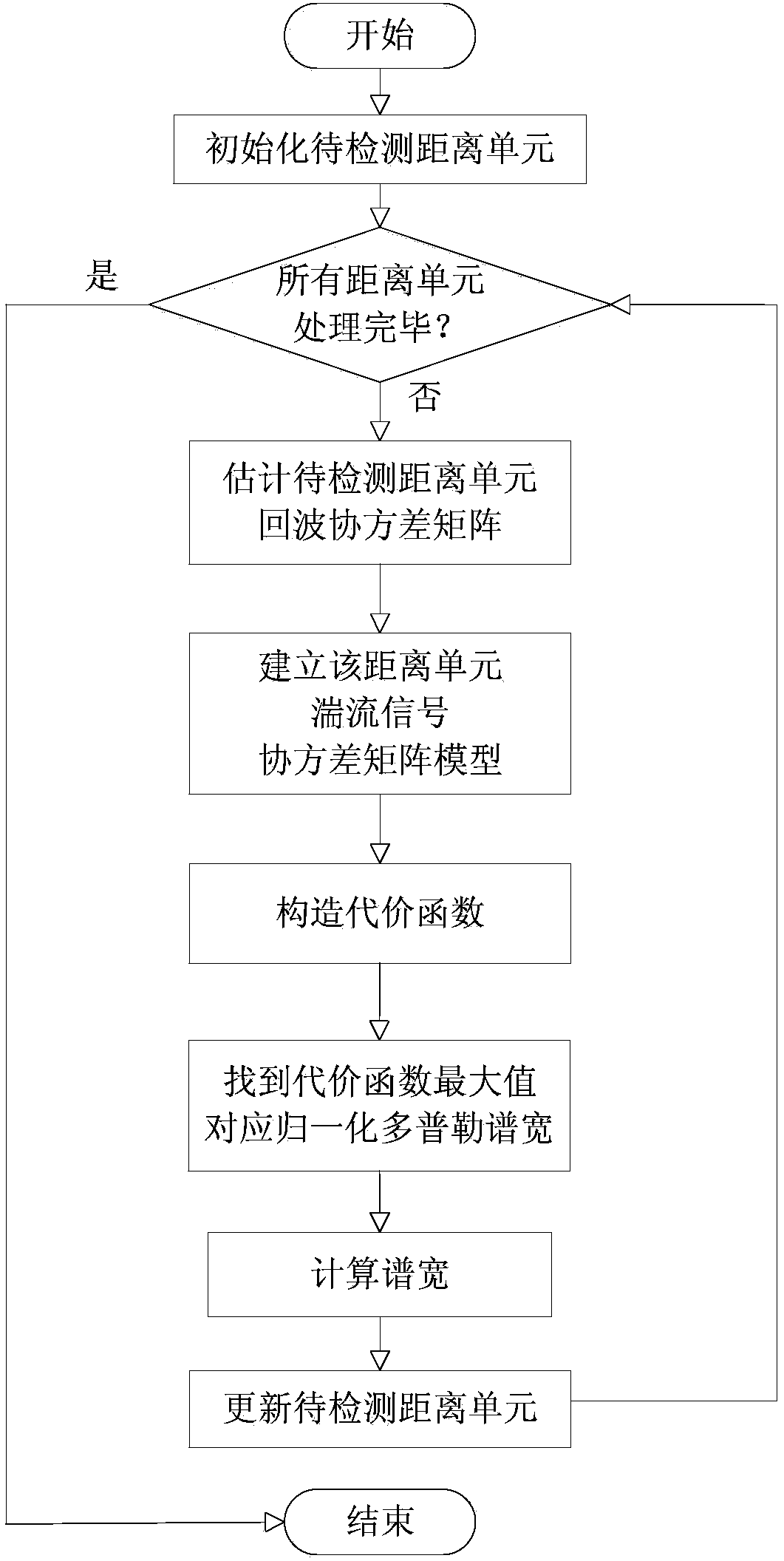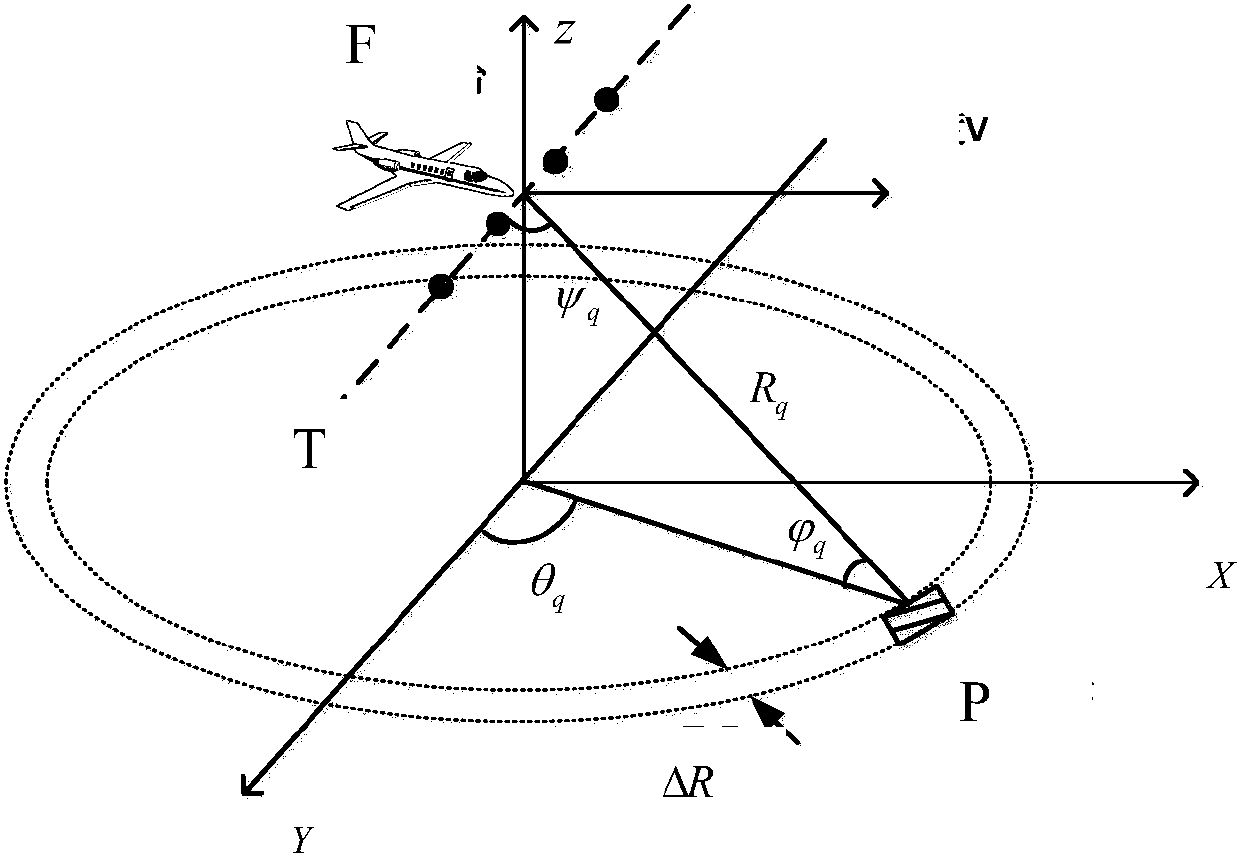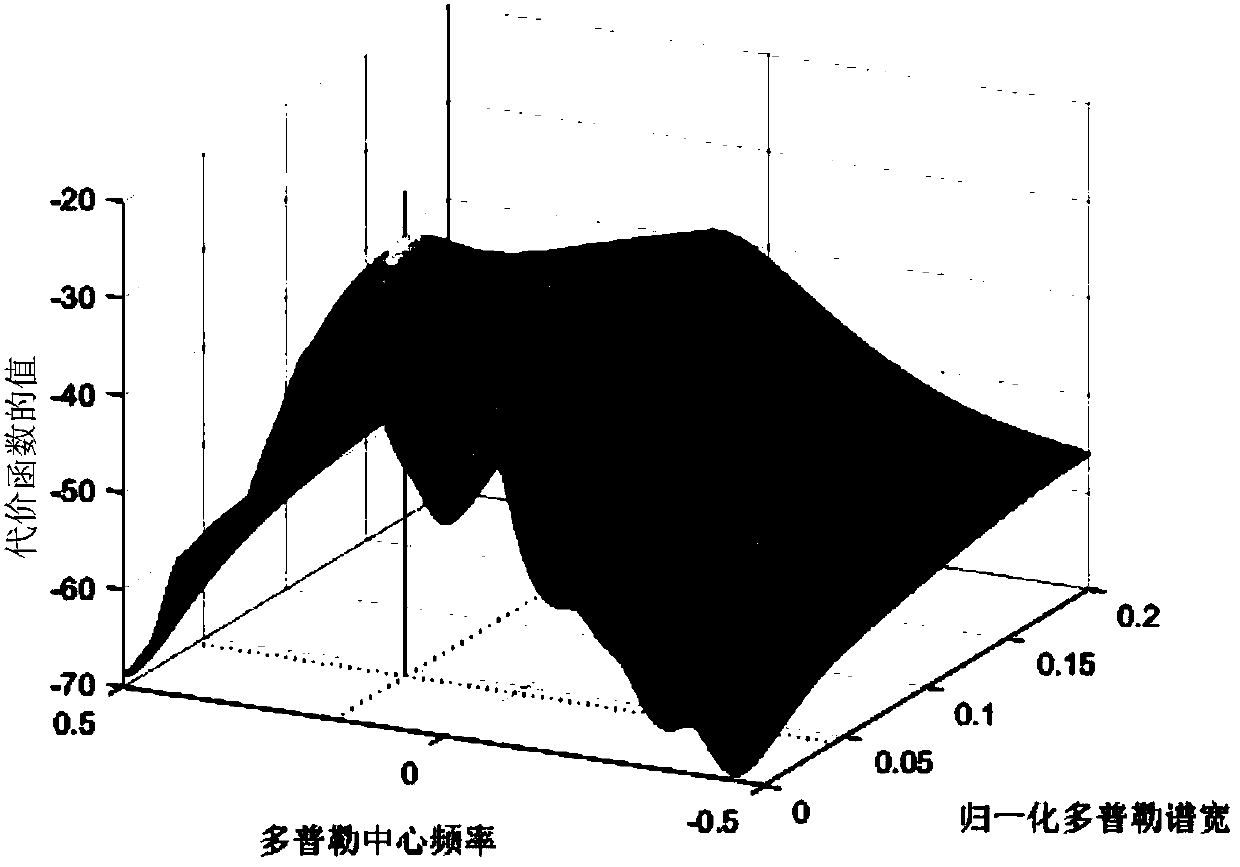Turbulence target velocity spectrum width estimation method based on space-time covariance matrix fitting
A technology of covariance matrix and target velocity, applied in the direction of radio wave reflection/re-radiation, using re-radiation, measuring devices, etc., can solve the problems of complexity, low complexity of pulse pair method, and unsatisfactory estimation performance, etc., to achieve Effect of Effective Spectral Width Estimation
- Summary
- Abstract
- Description
- Claims
- Application Information
AI Technical Summary
Problems solved by technology
Method used
Image
Examples
Embodiment Construction
[0020] The turbulent target velocity spectral width estimation method based on space-time covariance matrix fitting provided by the present invention will be described in detail below with reference to the accompanying drawings and specific embodiments.
[0021] like figure 1 As shown, the turbulent target velocity spectrum width estimation method based on space-time covariance matrix fitting provided by the present invention includes the following steps in order:
[0022] 1) Initialize the radar echo data of all the range units to be detected, and estimate the covariance matrix of the radar echo signal from the radar echo data of the range units to be detected received by the array antenna on the airborne weather radar
[0023] The airborne forward view array geometric model is as follows figure 2 As shown, first initialize the radar echo data of all the distance units to be detected: Assume that the aircraft flies in a straight line at a constant speed V, the airborne ra...
PUM
 Login to View More
Login to View More Abstract
Description
Claims
Application Information
 Login to View More
Login to View More - R&D
- Intellectual Property
- Life Sciences
- Materials
- Tech Scout
- Unparalleled Data Quality
- Higher Quality Content
- 60% Fewer Hallucinations
Browse by: Latest US Patents, China's latest patents, Technical Efficacy Thesaurus, Application Domain, Technology Topic, Popular Technical Reports.
© 2025 PatSnap. All rights reserved.Legal|Privacy policy|Modern Slavery Act Transparency Statement|Sitemap|About US| Contact US: help@patsnap.com



